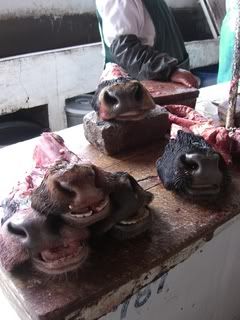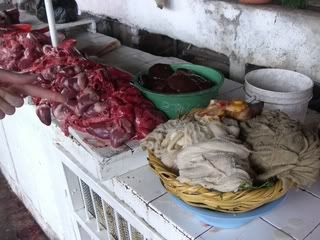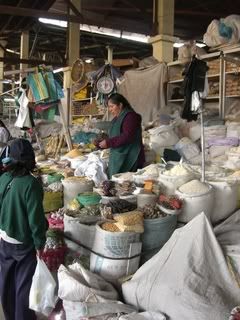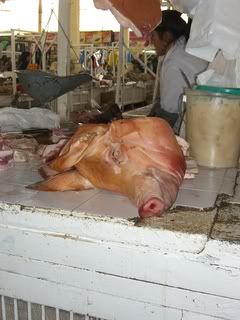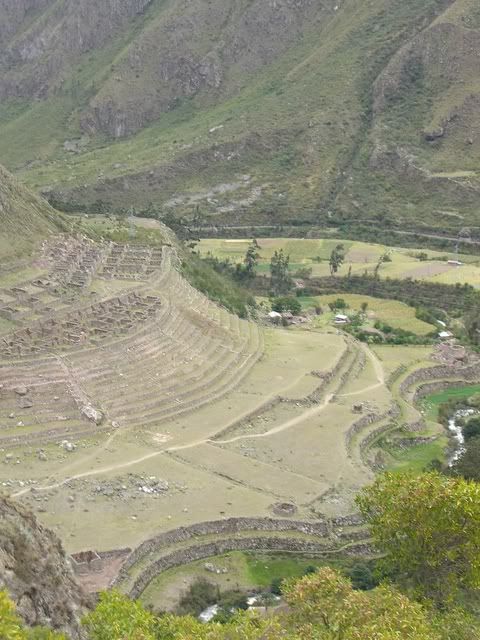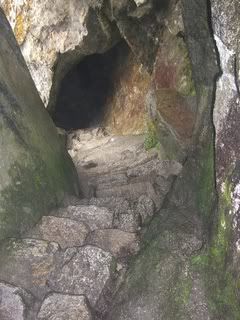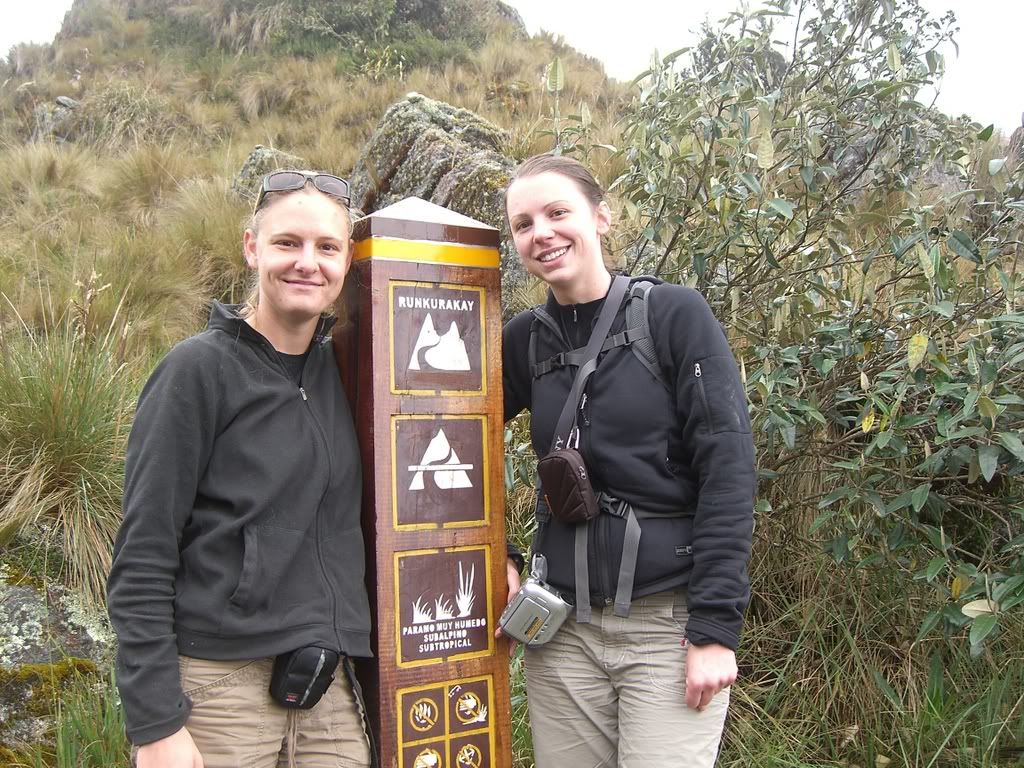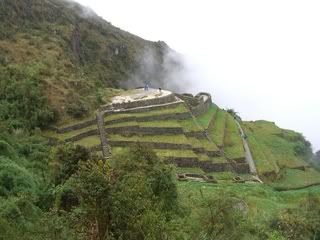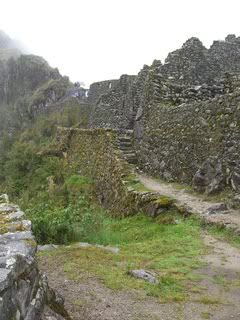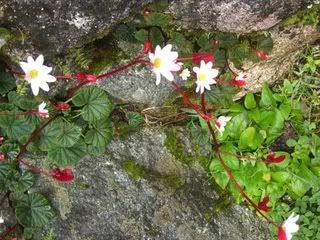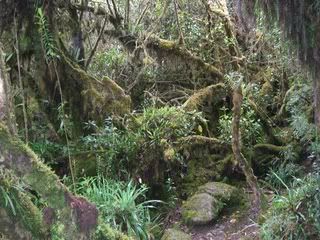Peru 4 – Machu Picchu…the Ruins (+ Feliz Navidad!)
Tuesday, December 25th, 2007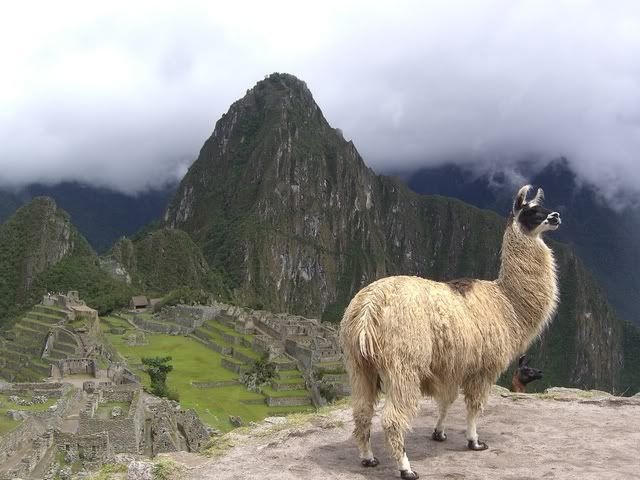
Classic View of Machu Picchu + Llama
On the 4th and final day of the Classic Inka Trail, we were roused by the chaskies with hot coca tea at the shockingly early hour of 3:30 am. Our guide was hell-bent on us being the first ones in line at the entrance to MP. You see, the park opens at 6 am and we still had a 2 hour walk ahead of us before arriving at the actual ruins. Indeed, we were the first group at the Sun Gate (which we arrived at in 40 minutes rather than the specified 2 hours) and were rewarded with…a beautiful view of fog. The ruins were completely obscured and we could see absolutely nothing. Note to self: advise people considering the Inka Trail to NOT go in the rainy season.

We waited a bit hoping the fog would clear but it did not so instead we set out for the the final 15 minute walk to the grounds of the ruins hoping that the fog would clear just enough to get our “Classic Photo”. Along the way we ran into Machu Picchu’s resident llamas…some of which are pictured here. Llamas are quite an amusing bunch and these guys just cruise around the grounds, pose for pictures and hang out. Quite the nice life if you ask me. The fog was getting a little better by the time we arrived at the grounds and after a trip to the snack bar for some real coffee and a fancy Machu Picchu stamp in our passport, our guide commenced with the guided tour of the grounds.

Lindsay + Ruins
As I mentioned in the last post, many theories abound as to the use of Machu Picchu. Initially it was believed that MP existed as a settlement built to protect the most important of the Incan aristocracy. Most archaeologists now believe that MP was an estate of the Incan emperor Pachacuti. Machu Picchu includes 140 structures including parks, residences and temples. The proprietors of MP added thatched roofs to some of the existing residences to demonstrate what the city may have looked like 500 years ago. I’ve included a picture of the restored buildings as well as another picture demonstrating how the thatched roofs are attached to the building via leather straps and jungle vines.
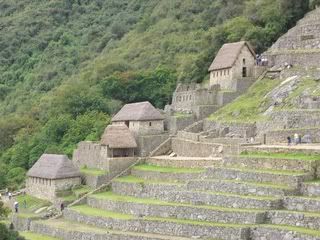

The area around Machu Picchu (and truly, much of South America) is wrought with significant seismic activity due to the fact that the entire Andes Mountain range exists because of the subduction of the Nazca tectonic plate beneath the South American plate. As such, the Incas were no strangers to earthquakes and devised several interesting architecture methods to deal with this calamity. Take, for example, this door:

All Incan-built doors and windows were constructed so that the tops were narrower than the bottom as this shape withstood earthquakes much better. Also note the circular stone above the doorway…this was part of an interesting door-locking system. A second example of earthquake-prevention architecture can be found in this picture of an altar within one of the rooms:

Note how some of the bricks are not fitted tightly together as is the general custom of the Inca’s stone work. This was to ensure that if only part of a wall collapsed during an earthquake it would be easy to pull out the broken sections and replace them.
A common feature of Incan architecture are, of course, the terraces that are often found on the mountain faces. While most people know these terraces were used to create flat areas for growing crops, people are frequently unaware that the terraces were also used to prevent soil erosion and land slides. I’ve included views of the terraces from both above and below so you can get an idea of what they look like.
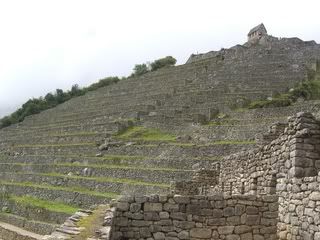
View of terraces from below
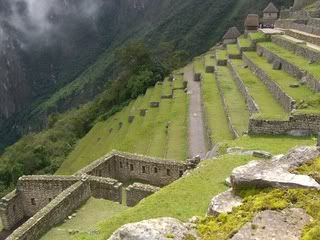
View of terraces from above
As a special Navidad bonus I’ve also included below some interesting pictures from the public market in Cusco (and our chaskies on the trail). Enjoy and happy holidays to all!
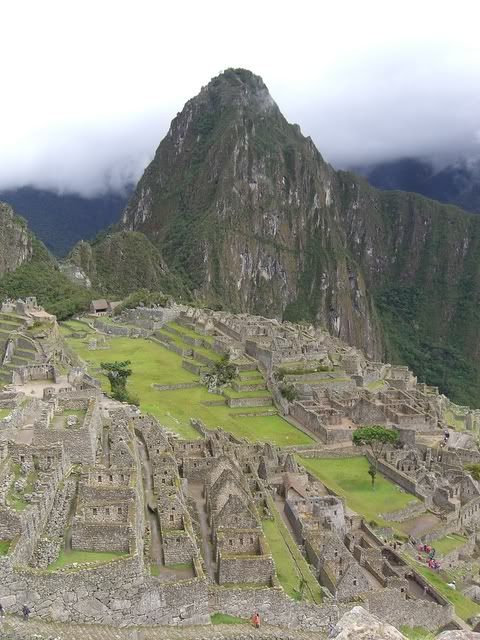

Some of the chaskies

